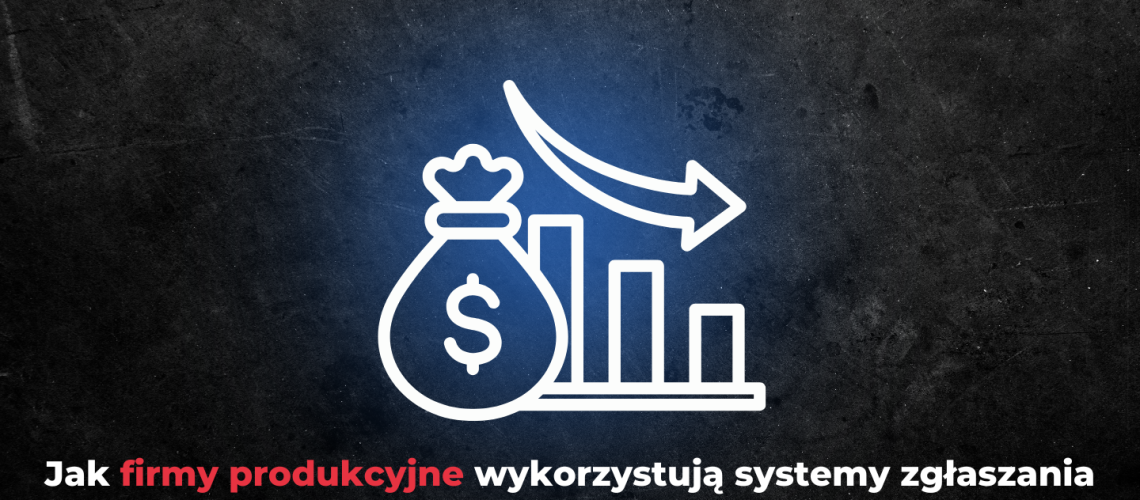In today's dynamic manufacturing environment, any process optimization can increase efficiency and reduce operating costs. One of the most effective tools in this regard are idea submission systems that involve employees in identifying problems and implementing improvements. How are manufacturing companies using these systems to reduce waste and costs? Here are key strategies and best practices.
Table of contents
- Why is waste and cost reduction a priority for manufacturing companies?
- Idea submission systems - what are they based on?
- How do employees affect waste and cost reduction?
- Most common problems and errors in idea submission systems
- Best practices for implementing suggestion systems in manufacturing companies
- Sherlock Waste - how does it support companies in reducing waste and optimizing costs?
- Summary
1 Why is waste and cost reduction a priority for manufacturing companies?
High competition, rising prices for raw materials that manufacturing companies are constantly looking for ways to reduce waste. Eliminating waste not only saves money, but also improves process efficiency and increases sustainability.
Key challenges:
- Overproduction and waste of raw materials,
- Inefficient logistics and warehousing processes,
- Errors in the production process generating waste,
- Energy and resource costs.
2. idea submission systems - what are they based on?
Idea submission systems are tools that enable employees to identify problems and propose solutions. They work on the basis of a simple mechanism:
- An employee submits an idea for improvement via an application, form or dedicated platform.
- The innovation team analyzes the application and evaluates its potential.
- The best proposals are implemented and monitored for effects.
- The employee receives feedback and, if possible, an award for the application.
3 How do employees affect waste and cost reduction?
Employees who are closest to production processes often have the best insight into daily problems and can identify the most effective ways to solve them.
Examples of improvements reported by employees:
- Optimize raw material consumption through better planning of material cutting,
- Use of waste to produce other components,
- Internal transportation improvements that reduce time and energy consumption,
- Automate repetitive processes to reduce errors.
4. the most common problems and errors in idea submission systems
Barriers to effective systems performance:
- Lack of responsiveness to requests - employees lose motivation if their ideas are not analyzed,
- Overly complicated process for submitting ideas,
- No system of rewards and recognition,
- Non-transparent communication about the effects of implemented changes.
5. best practices for implementing suggestion systems in manufacturing companies
How to effectively implement an idea submission system?
- Simplifying the reporting process - e.g., a mobile app instead of paper forms.
- Rapid response to requests - defining a maximum response time to an idea.
- Transparency - informing employees about the status of their application.
- Prizes and awards - recognizing the best ideas.
- Integration with Lean methodology - using notifications as part of a continuous improvement culture.
6 Sherlock Waste - how does it support companies in reducing waste and optimizing costs?
Sherlock Waste is a state-of-the-art tool that helps manufacturing companies effectively manage their idea submission system. With it:
- Employees can quickly and easily submit ideas,
- The system automatically categorizes requests and assigns them to the appropriate departments,
- Data analysis allows measuring the real effects of implemented improvements,
- Transparency of the process increases team motivation.
Examples of the effects of implementing Sherlock Waste in manufacturing companies:
- Reduction of raw material waste by 20-30%,
- Reduce the processing time of requests by 50%,
- Increase in the number of innovations reported by up to 70%.
7 Summary
Idea submission systems are a key component of cost and waste reduction strategies in manufacturing companies. Involving employees in the continuous improvement process not only saves resources, but also builds a culture of innovation. With tools such as Sherlock Waste, implementing these systems becomes easier, more efficient and brings tangible benefits.
👉 Schedule a meeting now and start a revolution of innovation in your organization!






